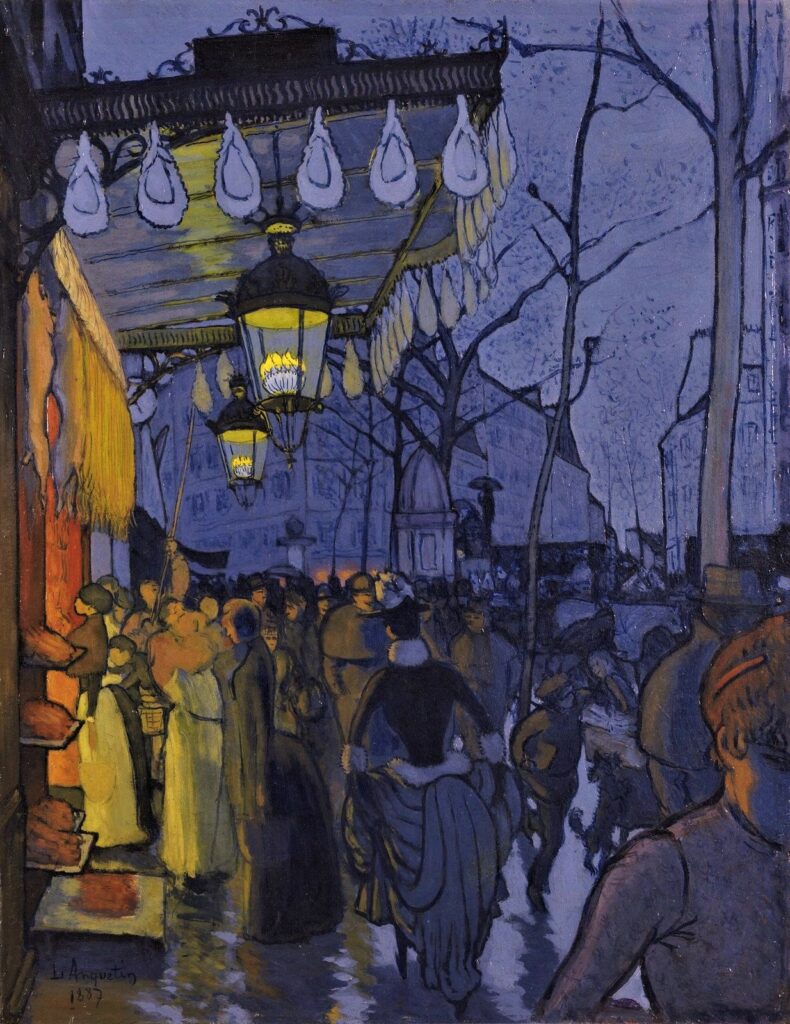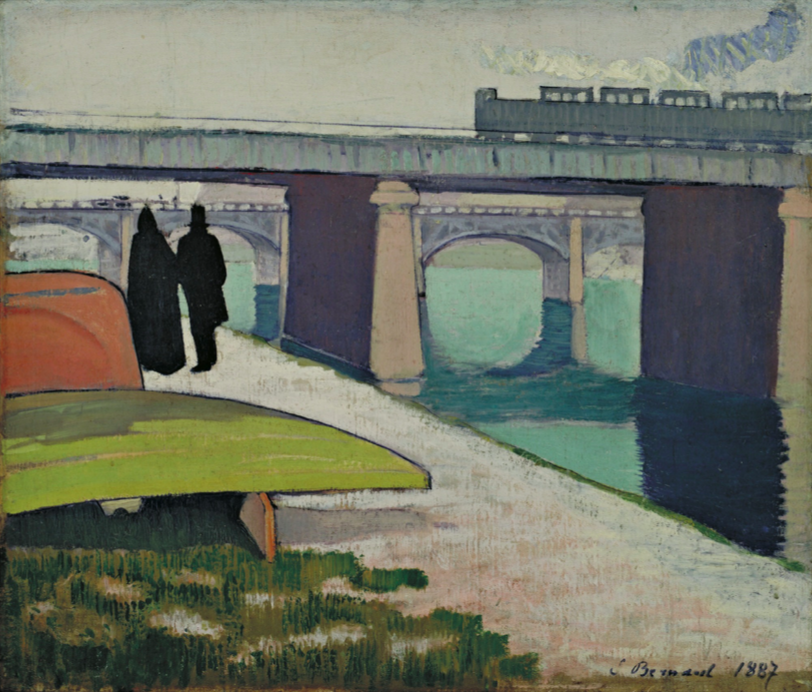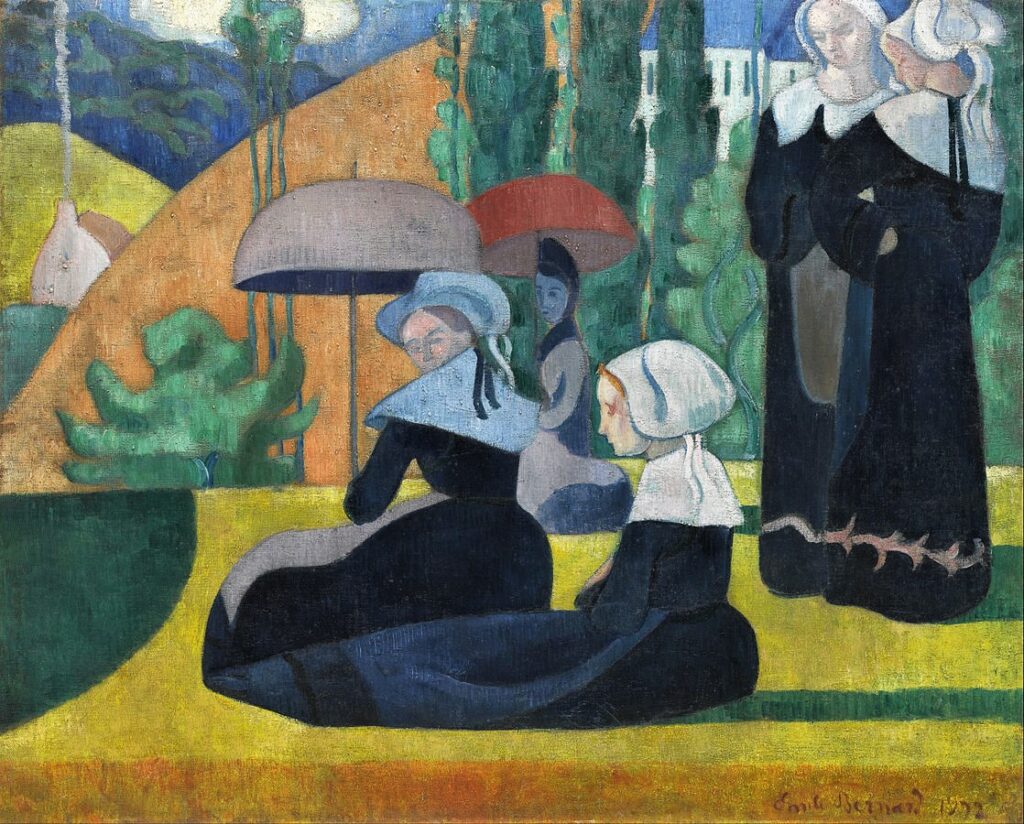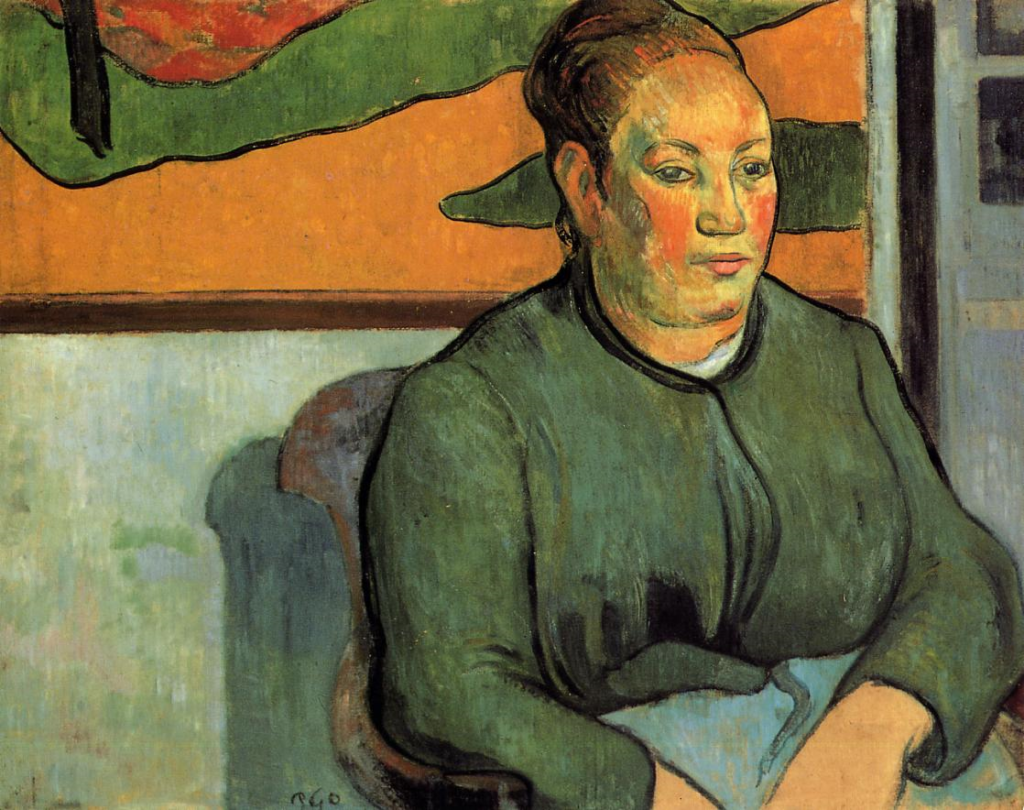Post-Impressionism
Cloisonnism
a symbolist art-movement
Cloisonnism:
March 1888 Édouard Dujardin wrote in a review in the Revue Indépendante and introduced “cloisonnisme” as a new genre (iR40;=R268). He attributed it only to Louis Anquetin, who had exhibited at Les XX in Brussels and at the Salon des Independants in Paris (iR4;R181,p609). As caracteristics Dujardin mentioned: rendering a minimum of lines; using closed lines, therein a juxtapostion of colours render the sensation and this way rendering compartments (cloisonné); complementairy colours would destroy the unity of the painting; painting with plain colours; a violent and interrupted colouring; a symbolic conception of art; rendering not the image of nature, but the character / the sense of the objects / the essential; decorative painting; an intellectual and systhematic construction.
Note: several of his discriptions will later be used to describe Synthetism or Symbolism.
Cloissonism is a decorative form of painting, a symbolic concept of art. Characteristic for it’s style is the use of compartmented areas of flat, violent colour with a clear outline. Blue (or black) outlined areas of pure colours are placed next to each other decoratively and without transitional tones (R170,p104). The artists tried to depict, not the external appearance of nature, but it’s character / sentiment / essence. In other words the object was symbolised. Perspective and the faithful representation of nuances, details and natural conditions are neglected (R170,p104). This art-movement was inspired by Japonism, primitive art, enamel art and stained-glass windows. Sérusier called Cézanne, who thickened and distorted his lines, the first practitioner of the ‘Cloison’ (the partition) (R181II,p459+457). Cloisonnism can be translated as ‘Partitionism’. Cloisons are compartments.
To discern Cloisonnism from Synthetism and Symbolism I like to describe Cloisonnism as a symbolist art-movement, initiated in France by Anquetin and Bernard around 1887, which, like stained-glass windows, use obvious lines, thus creating compartments which are evenly coloured. Since the late summer of 1888 these elements of Cloisonnism are integrated in Synthetism.
Note: this use of clear lines, is in contradiction with the impressionist painting style, where lines are faded, because, as Dujardin put it ‘in nature lines don’t exist’ (R268,p490). Also the use of compartments with relative uniform colours, contradicts the impressionist use of juxtaposed small brush strokes with nuances of colours, also depending on the influence of (trees filtered) light.
Already around November-December 1887 there had been an exhibition held at the Grand-Bouillon restaurant, where Anquetin and Bernard included Cloisonnist works. (R181,p353+607). Gauguin visited this exhibition and would give the next year a deeper significance to the principles of Cloisonnism (R181II,p465+CR308). Gauguin didn’t consequently use this Cloissonnist technique, compare CR313 (see). Also Vincent van Gogh admired Cloisonnism as he wrote (1888/08/18) ‘I want to put colours like those of stained glass windows and drawings with strong lines into my paintings’ (R181II,p457).
Sources: Dujardin (1888=R268); Crussard (2002=R181); see links for more info on WikiPedia (iR3).
Recommanded citation: Post-Impressionism, symbolist art-movements: Cloisonnism. Last modified 2025/02/10. https://www.impressionism.nl/cloisonnism/”
Note: additional info and pictures will be added.








